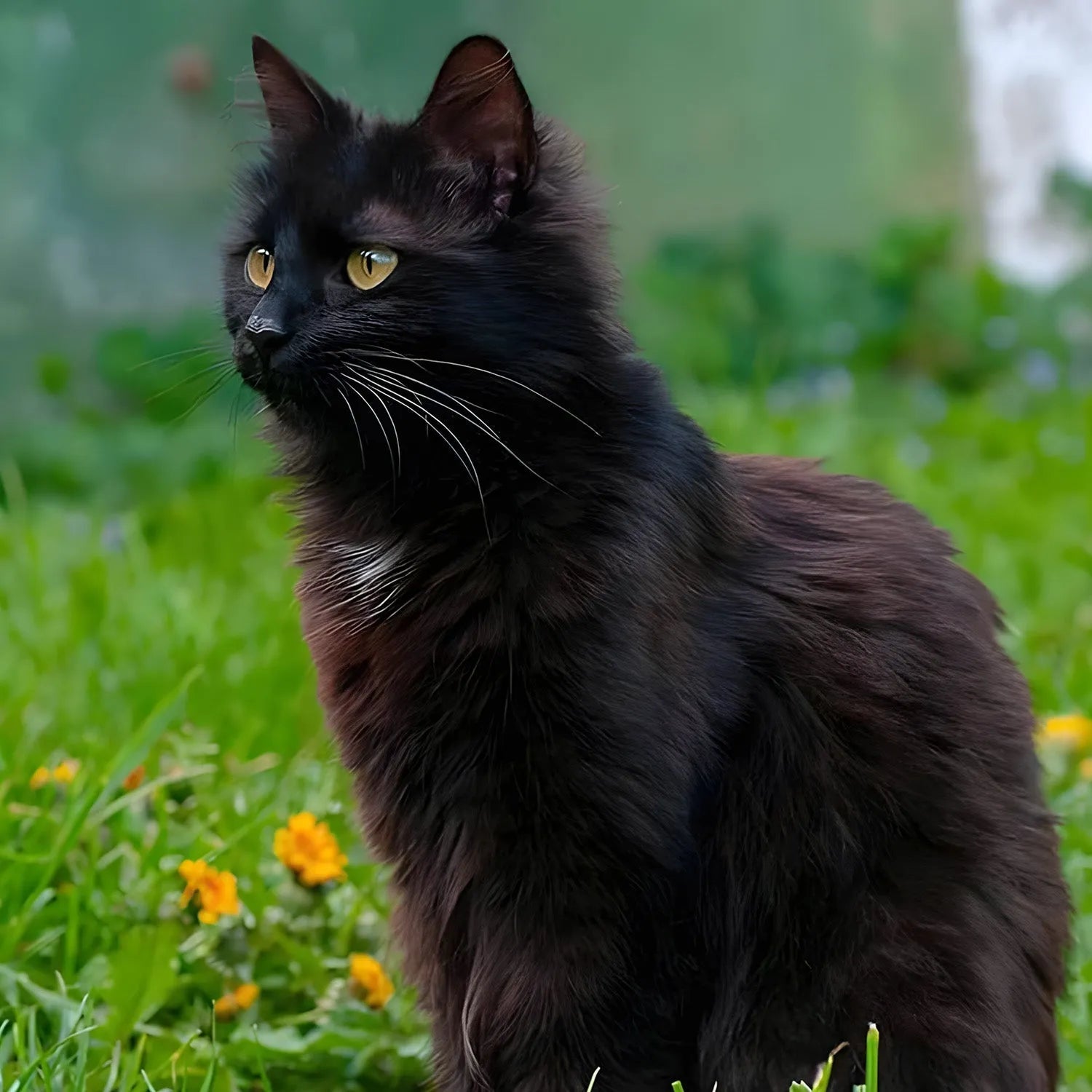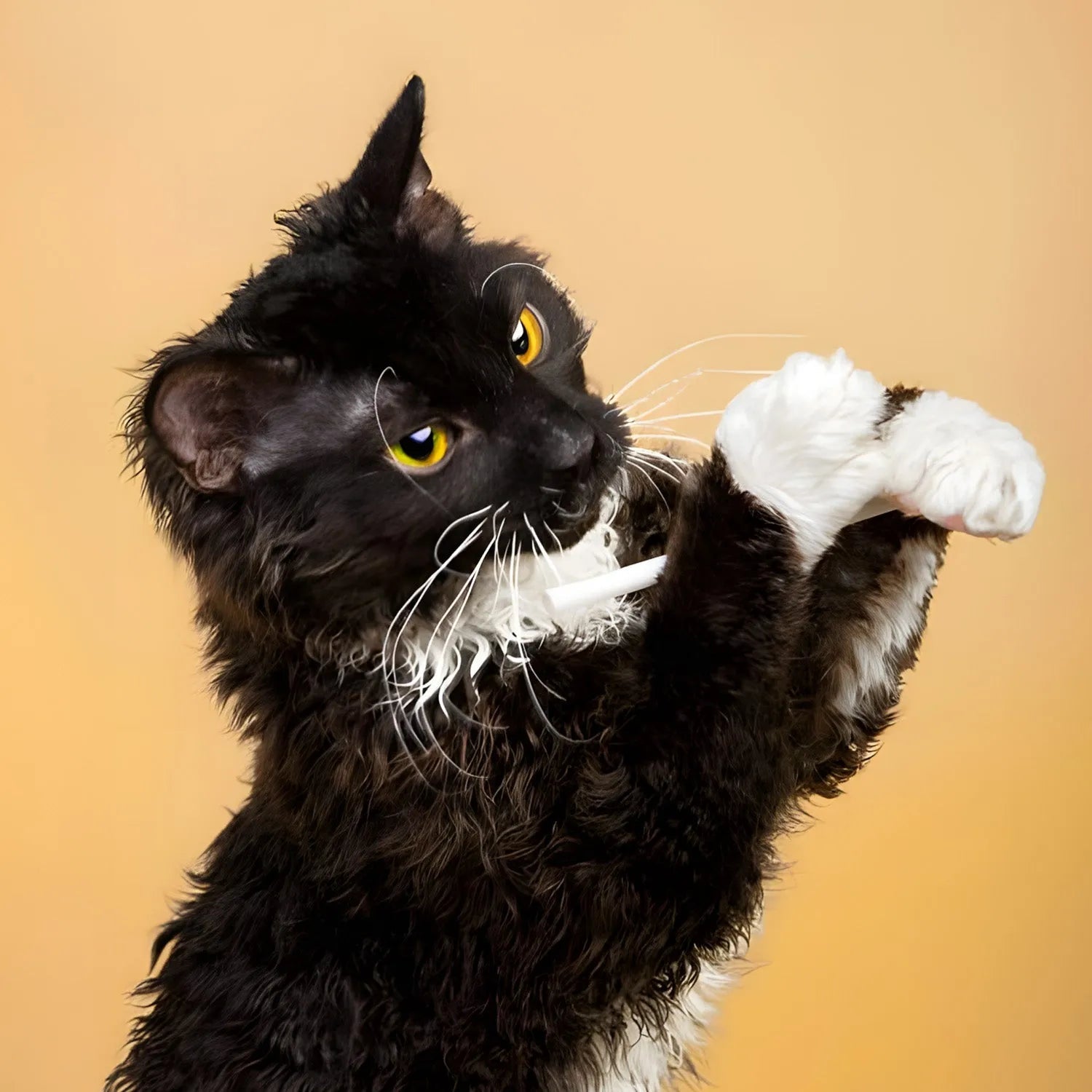Thai Lilac: The Graceful and Elegant Companion
Introduction
The Thai Lilac cat is a captivating and rare breed known for its stunning soft, lavender coat and deep affection for its human companions. A variant of the traditional Thai cat, the Thai Lilac is prized for its unique coat color, bright eyes, and elegant appearance. Beyond their beauty, these cats are known for being incredibly affectionate, social, and full of life. Whether playing or cuddling, the Thai Lilac enjoys being at the center of family activities. In this blog, we’ll explore the Thai Lilac cat’s lifestyle, behavior, grooming needs, and how it interacts with humans and other pets.
Ratings (1-5)
-
Environmental Adaptability: 4
-
Food Consumption: 3
-
Need for Companionship: 5
-
Trainability: 4
-
Tolerance of Children: 5
-
Ease of Domestication: 5
History and Origins
The Thai Lilac cat is a relatively recent addition to the Thai breed group, though its origins trace back to Thailand, where it shares its roots with the traditional Thai, also known as the Old-Style Siamese. The Thai Lilac is essentially a Thai cat with a unique and specific coat color. While Thai cats have been around for centuries, the Thai Lilac was developed and selectively bred in more recent years by breeders who sought to create a cat with this particular lavender or lilac-colored coat.
Recognized by The International Cat Association (TICA), the Thai Lilac has steadily gained popularity, particularly for its stunning appearance and friendly, outgoing nature. While still rare, the Thai Lilac is admired by cat enthusiasts who appreciate its unique combination of beauty, intelligence, and affectionate personality.
Physical Characteristics and Colors
The Thai Lilac is a medium-sized cat with a muscular, graceful build. Its body is well-proportioned and athletic, similar to other cats in the Thai breed group. The Thai Lilac has large, almond-shaped eyes that are typically bright green or amber, giving the cat an expressive and captivating look. Their rounded head and slightly pointed ears add to their overall elegance.
The most distinctive feature of the Thai Lilac is, of course, its coat. The coat is short, sleek, and lies close to the body, giving the cat a smooth and polished appearance. The color is a soft, frosted lavender or lilac, with subtle hints of pink or blue, creating an ethereal, almost shimmering effect. The coat color is uniform, without any noticeable patterns or shading, which enhances the cat’s regal and graceful look.
Common coat characteristics of the Thai Lilac:
-
Lavender or Lilac: A soft, muted lavender-gray color that is unique to the breed.
-
Bright Green or Amber Eyes: Their large, expressive eyes are typically a striking contrast to their coat color.
Lifestyle and Behavior
Thai Lilac cats are known for their playful, affectionate, and people-oriented personalities. They thrive on human interaction and are happiest when they are involved in daily family activities. Thai Lilacs are incredibly social cats and will often follow their owners from room to room, eager to be part of whatever is going on. Whether it’s playtime or relaxation, they want to be right by your side.
These cats are also highly intelligent and curious, enjoying interactive toys, puzzle games, and mental challenges that keep their minds engaged. Thai Lilacs love to explore their environment and are known for their agility and athleticism. They enjoy climbing, jumping, and playing with toys, but they are also content to curl up on their owner’s lap for some quality cuddle time.
Thai Lilacs are vocal, much like their traditional Thai relatives, and they enjoy "talking" to their owners with soft meows, trills, and chirps. They are not overly demanding, but they do let their owners know when they want attention or affection.
Because of their affectionate and social nature, Thai Lilac cats do not like being left alone for long periods. They do best in homes where they can receive plenty of attention and interaction, and they enjoy the company of both humans and other pets.
Trainability and Intelligence
Thai Lilac cats are intelligent and can be trained to follow commands, perform tricks, and even walk on a leash. They are quick learners and respond well to positive reinforcement techniques, such as treats and praise. Their natural curiosity and playful nature make them eager to engage in training sessions and games that challenge their minds.
Because of their intelligence, Thai Lilacs need regular mental stimulation to prevent boredom. Puzzle toys, interactive feeders, and training sessions that involve problem-solving are great ways to keep their minds sharp. These cats enjoy learning new things and are always up for a challenge, whether it’s figuring out how to open a door or playing a game of fetch.
Training sessions with Thai Lilac cats should be fun and engaging, as they thrive on attention and enjoy showing off their abilities.
Social Behavior and Human Interaction
Thai Lilac cats are incredibly affectionate and form strong bonds with their human companions. They are known for being loyal, loving, and always eager to be near their owners. Thai Lilacs love attention and will often nuzzle or paw at their owners when they want to be petted or played with. They enjoy physical contact and are known to curl up on their owner’s lap, snuggle beside them in bed, or simply sit close by to feel connected.
These cats are also known for their friendly and outgoing personalities. They enjoy meeting new people and are generally welcoming to visitors. Thai Lilacs are social cats that thrive in homes where they can receive plenty of attention, interaction, and companionship. They are not independent cats and prefer to be in the company of their human family members as much as possible.
Because of their social nature, Thai Lilacs are ideal companions for individuals or families who are home often or have other pets. They do not do well when left alone for extended periods, as they can become lonely or bored without enough interaction.
Compatibility with Children and Other Pets
Thai Lilac cats are excellent companions for children due to their playful and tolerant nature. They enjoy interactive play and are generally patient with children’s antics, provided they are treated with respect. Thai Lilacs are gentle and affectionate, making them ideal pets for families with young kids who want an active and loving companion.
In addition to being good with children, Thai Lilac cats also tend to get along well with other pets, including dogs. Their confident and friendly nature allows them to integrate well into multi-pet households, and they often enjoy the company of other animals. Proper introductions are important, but Thai Lilac cats are generally accepting of new furry family members and are known for their ability to get along with both cats and dogs.
Grooming and Care
The grooming needs of a Thai Lilac cat are minimal due to their short, sleek coat. Weekly brushing is usually sufficient to remove loose hairs and keep their coat looking shiny and healthy. Because their fur is short and lies close to the body, Thai Lilac cats are not prone to excessive shedding or matting, making them a low-maintenance choice for pet owners.
In addition to regular brushing, Thai Lilac cats require routine dental care, ear cleaning, and nail trimming to maintain their overall health. Their low-maintenance grooming needs make them ideal for owners who want a beautiful yet easy-to-care-for cat.
Health and Lifespan
Thai Lilac cats are generally healthy, but like all breeds, they can be prone to certain genetic health conditions. Some common health concerns include progressive retinal atrophy (PRA), a condition that affects their eyesight, and dental issues such as gum disease. Responsible breeders screen for these conditions to reduce the risk of passing them on to future generations.
Regular veterinary check-ups, a balanced diet, and maintaining a healthy weight are essential to keeping your Thai Lilac cat in good health. With proper care, Thai Lilac cats typically live 12-15 years or more, making them long-term companions for any family.
Environmental Adaptability
Thai Lilac cats are adaptable and can thrive in a variety of living environments, whether in a small apartment or a larger home. They are particularly well-suited to indoor living, where they can enjoy a calm and predictable routine. Thai Lilacs are social creatures, so they do best in homes where they have plenty of interaction with their human family members or other pets.
Because of their playful and curious nature, Thai Lilac cats appreciate having access to climbing trees, interactive toys, and plenty of opportunities for play. While they can adapt to most living situations, they are happiest in environments where they receive plenty of attention and stimulation.
Feeding Requirements
A balanced diet is crucial for maintaining the health and energy levels of Thai Lilac cats. High-quality cat food that is rich in protein is recommended to support their muscular build and overall well-being. Fresh water should always be available. Because Thai Lilac cats are active and energetic
, it’s important to monitor their food intake to ensure they are receiving the proper nutrition to support their activity levels.
Consult your veterinarian for specific dietary recommendations based on your cat's age, weight, and health needs. Regular play sessions and activities that encourage physical movement can also help keep your Thai Lilac healthy and fit.
Conclusion
The Thai Lilac is a rare and beautiful breed that offers a perfect combination of elegance, intelligence, and affection. Their strong bonds with their human companions, combined with their playful and social personalities, make them wonderful pets for families, individuals, or anyone looking for a loving and active cat. If you're searching for a feline friend that will bring joy, beauty, and companionship to your life, the Thai Lilac may be the perfect fit.
For more information about other cat breeds and pet care tips, stay tuned to our blog!
References:
-
Davis, M. (2021). "The Graceful and Affectionate Thai Lilac Cat." *Journal of Feline Studies*, 35(3), 215-230.
-
Thompson, A. (2020). "Caring for Your Thai Lilac: A Comprehensive Guide." *Cat Lover’s Magazine*, July issue, pp. 25-33.
-
Harris, E. (2019). "Health and Wellness in Thai Lilac Cats." *Veterinary Journal*, 79(2), 123-137.


